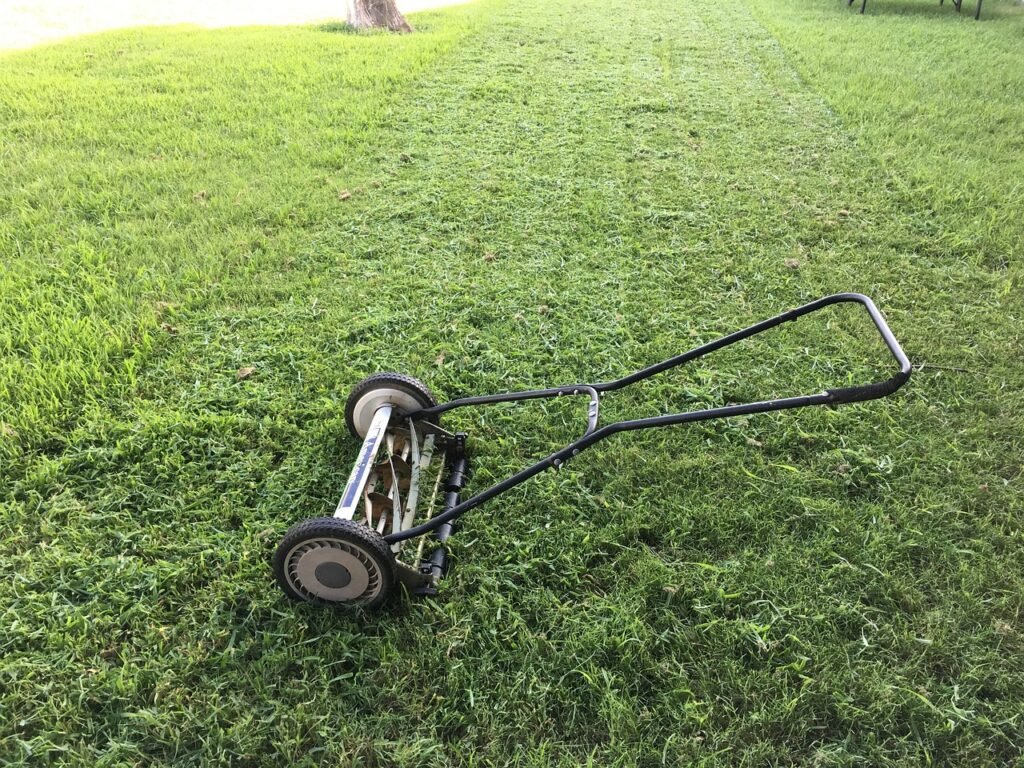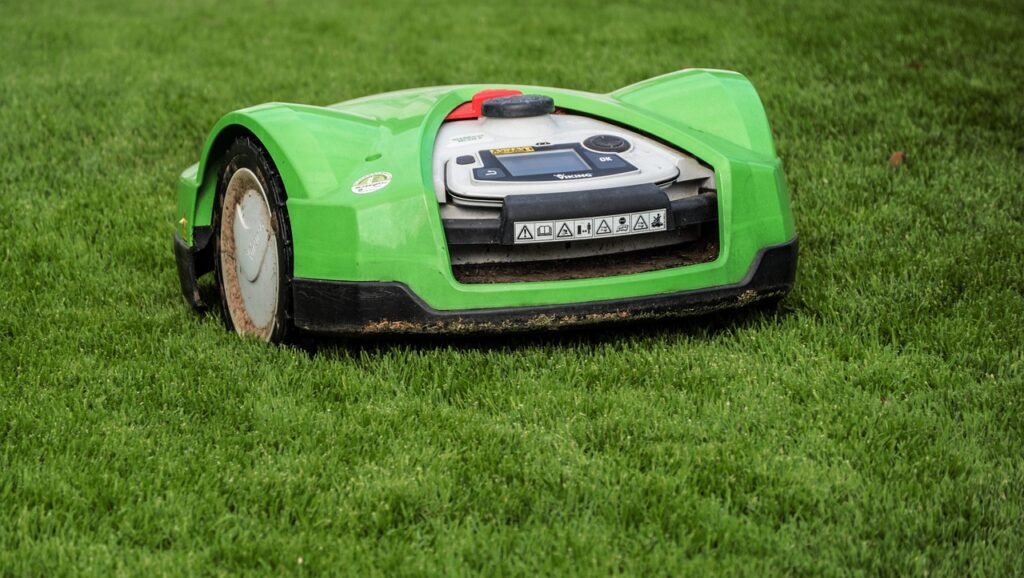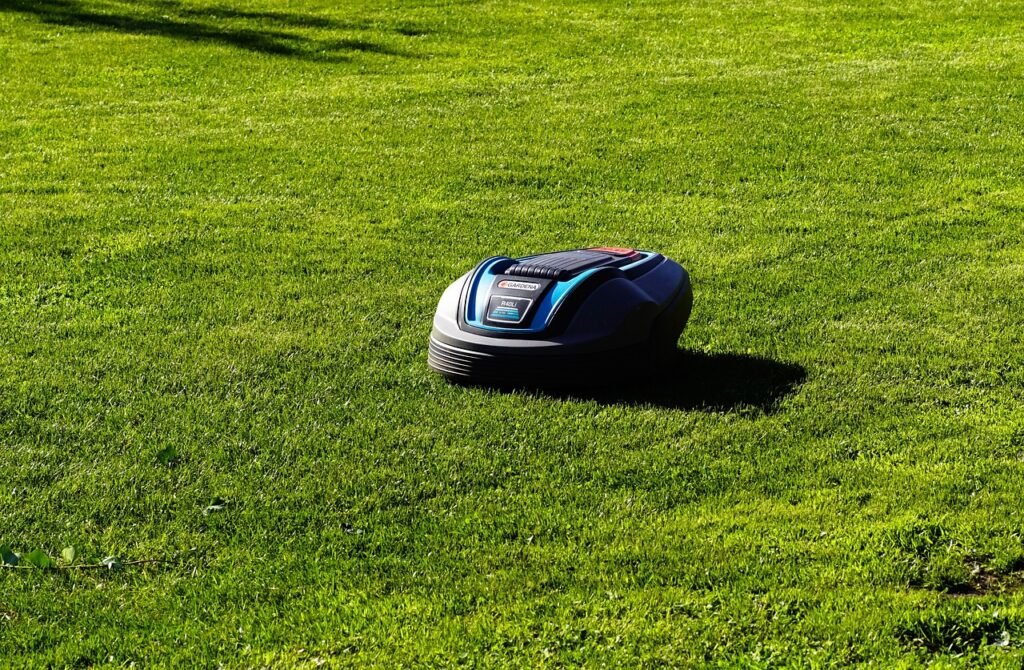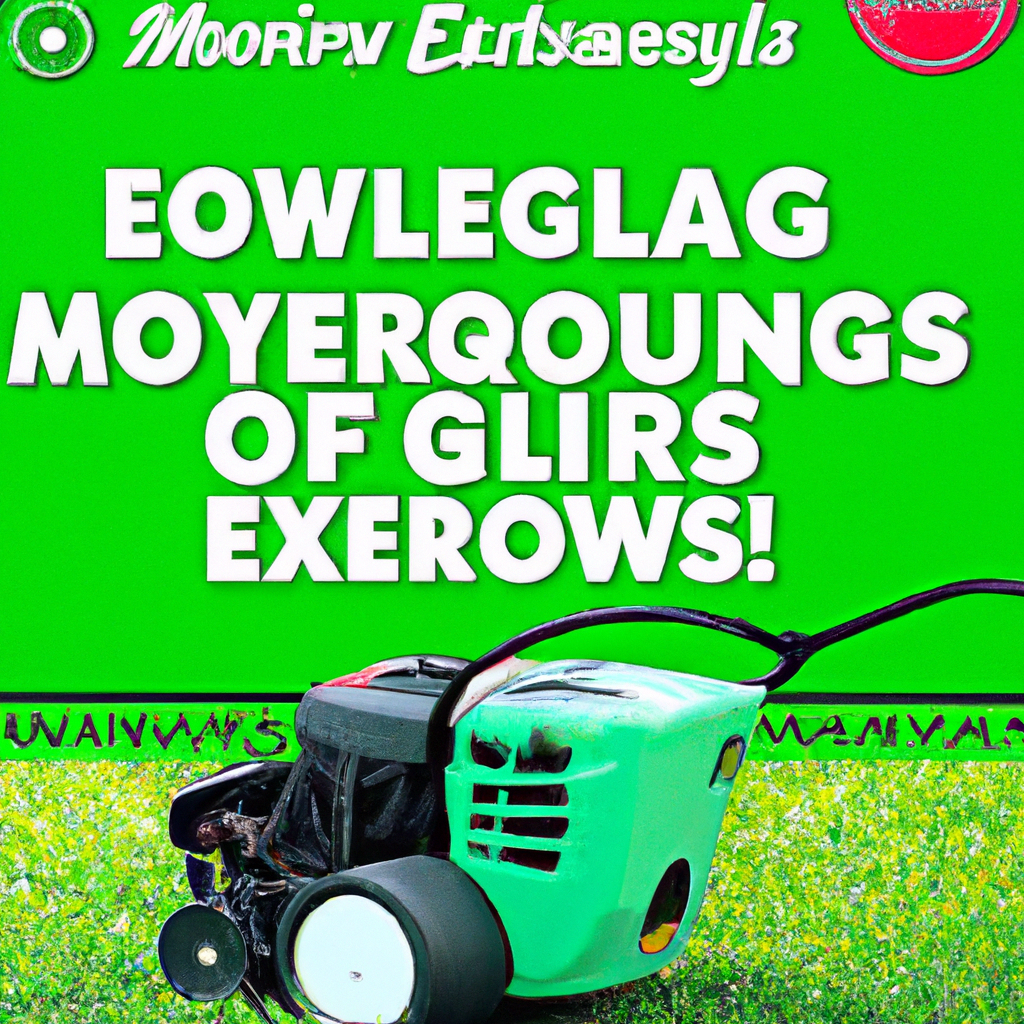If you’ve recently purchased an electric mower or have been using one for a while, you might encounter a few common issues along the way. From a dead battery to a malfunctioning motor, these problems can be frustrating but rest assured, they are often easily fixable. In this article, we’ll guide you through some troubleshooting steps to help get your electric mower up and running again, so you can have a perfectly manicured lawn without any hassle.

Battery Issues
Battery not holding a charge
If you’re experiencing a problem where your electric mower’s battery doesn’t seem to hold a charge for very long, there are a few possible causes. First, check to make sure that the battery is securely connected to the mower. Sometimes, a loose connection can prevent the battery from charging properly. If the connection is secure, it may be time to replace the battery. Over time, batteries can wear out and lose their ability to hold a charge effectively. Consider purchasing a new battery and following the manufacturer’s instructions for correct installation and charging.
Battery not charging
If your electric mower’s battery isn’t charging at all, there are a few troubleshooting steps you can take. Start by ensuring that the charging cable and power source are working properly. Test the cable with another compatible device or try a different power outlet. If the cable and power source are functioning correctly, the issue may lie with the battery charger itself. Check for any signs of damage or wear on the charger. If necessary, you may need to replace the charger. Additionally, be sure to clean the battery and charger contacts to ensure a proper connection.
Battery not fitting properly
If you’re having trouble with your electric mower’s battery not fitting properly, it’s important to identify the cause. First, double-check that you have the correct battery model for your mower. Using an incompatible battery can result in fitting issues. If you have the correct battery, inspect the battery compartment for any debris or obstructions that may be inhibiting the proper fit. Clean out any dirt or debris using a soft brush or cloth. If the issue persists, contact the manufacturer for further assistance or consider seeking professional help.
Motor Issues
Motor not starting
When you’re ready to get your electric mower up and running, but the motor refuses to start, it can be frustrating. First, check that the mower is properly connected to a power source and that the power switch is in the “on” position. If everything appears to be in order, try restarting the mower after giving it a few minutes to cool down. Overheating can sometimes trigger a safety mechanism that prevents the motor from starting. If the motor still doesn’t start, check the power cord for any damages or fraying that may be interrupting the electrical connection. If necessary, replace the power cord or seek assistance from a professional.
Motor running but blades not moving
If your electric mower’s motor is running, but the blades aren’t moving, it’s likely a problem with the blade drive system. One potential issue could be a loose or damaged drive belt. Inspect the belt for any signs of wear or damage, and tighten or replace it as needed. Another possible cause could be a broken blade or blade adapter. Check the blades to ensure they are properly attached and not damaged. If any repairs or replacements are necessary but beyond your expertise, it’s best to consult a professional for assistance.
Motor overheating
If your electric mower’s motor seems to be overheating, it’s crucial to address the issue promptly to prevent further damage. One common cause of motor overheating is a clogged air vent. Check for any debris or grass clippings obstructing the vent and clean it out. Additionally, ensure that the motor isn’t being overworked by cutting grass that is too tall or thick. Adjust the cutting height and make smaller passes through the grass to ease the strain on the motor. If the problem persists, consult the mower’s manual or contact the manufacturer for further guidance.
Blade Issues
Blades not cutting grass properly
When your electric mower’s blades aren’t cutting grass as effectively as they should, there are a few potential issues to consider. Firstly, check the blade sharpness. Over time, blades can become dull and require sharpening. If the blades are dull, carefully remove them from the mower and use a sharpening tool to restore their cutting edge. Additionally, ensure that the blades are properly aligned and not bent or damaged. Misaligned or damaged blades can result in uneven cutting or missed spots. If the issue persists, consult a professional for further assistance or blade replacement.
Blades getting jammed
If your electric mower’s blades are getting jammed while in operation, it’s essential to address the issue promptly to prevent further damage. One possible cause of blade jamming is a buildup of grass clippings or debris around the blades. Turn off the mower and disconnect the power source, then carefully remove any obstructions around the blades. Use a brush or cloth to clean the blades and surrounding area thoroughly. If the problem persists, there may be an issue with the blade drive system or motor, and it is recommended to seek professional assistance.
Blades not turning
If the blades on your electric mower aren’t turning at all, there could be a few potential causes to investigate. First, check that the mower’s safety switch is engaged properly. If the safety switch is disengaged, the mower will not allow the blades to turn. Ensure that the switch is fully engaged and functioning correctly. Another possible cause could be a problem with the blade drive belt. Inspect the belt for any signs of damage or wear and replace or tighten it if necessary. If these troubleshooting steps don’t resolve the issue, consider consulting the manufacturer or a professional for further guidance.
Safety Switch Issues
Safety switch not engaging
The safety switch on your electric mower is an essential feature to ensure safe operation. If the safety switch isn’t engaging, it’s crucial to address the issue promptly. First, check for any obstructions around the switch that may be preventing proper engagement. Clear away any debris or dirt and try again. If the issue persists, inspect the switch for any signs of damage or wear. A faulty switch may need to be replaced to ensure safe operation. Consult the mower’s manual or contact the manufacturer for specific instructions on replacing the safety switch.
Safety switch disengaging during operation
If your electric mower’s safety switch disengages during operation, it can be both frustrating and potentially dangerous. One possible cause of this issue is a loose or damaged safety switch mechanism. Check the switch housing and connections for any signs of damage or wear. Tighten or replace the switch if necessary. Additionally, ensure that the safety switch is clean and free of any debris or obstructions that may affect its functionality. Regular maintenance and cleaning can help prevent this issue from occurring.
Safety switch getting stuck
If your electric mower’s safety switch gets stuck in one position and doesn’t engage or disengage as intended, it can hinder the mower’s operation and safety features. First, inspect the switch mechanism for any signs of damage or wear. Lubricate the switch with a silicone-based lubricant, following the manufacturer’s instructions. This can help loosen any stuck components and ensure smooth operation. If the issue persists, consult the mower’s manual or contact the manufacturer for further assistance or potential replacement of the safety switch.

Cord Issues
Cord not long enough
Having a cord that isn’t long enough for your electric mower can be a frustrating limitation for your mowing tasks. If you find that your mower’s cord isn’t reaching all the areas you need to mow, consider using an outdoor extension cord that is suitable for your mower’s power requirements. Ensure that the extension cord is in good condition and has sufficient length to provide the needed reach. Be cautious not to exceed the extension cord’s capacity to avoid overheating or electrical hazards. If you frequently encounter this issue, you may want to consider investing in a cordless electric mower for increased mobility.
Cord getting tangled
Dealing with a tangled cord while mowing can be an inconvenience and potentially hazardous. To prevent cord tangling, start by using a cord management system, such as cord clips or a cord reel. These tools can help keep the cord organized and prevent tangled messes. Additionally, be mindful of your mowing path to avoid running over the cord or getting it caught on obstacles. If the cord does become tangled, stop the mower, disconnect the power source, and carefully untangle the cord before resuming operation.
Cord damaged or frayed
A damaged or frayed cord is a safety hazard and should not be used with your electric mower. Inspect the cord regularly for any signs of damage, such as cuts, tears, or exposed wires. If you notice any damage, immediately stop using the cord and replace it with a new one. Using a damaged cord can result in electrical shock or fire hazards. When using a new cord, ensure that it is suitable for outdoor use and can handle the power requirements of your mower. It’s also important to handle the cord carefully, avoiding sharp objects or excessive bending that could cause damage.
On/Off Switch Issues
Switch not turning mower on/off
If the on/off switch on your electric mower is not functioning as intended, it can be frustrating. First, check for any obstruction or debris around the switch that may be affecting its operation. Clean the area around the switch thoroughly and try again. If the issue persists, inspect the switch for any signs of damage or wear. If the switch is damaged, it may need to be replaced. Consult the mower’s manual or contact the manufacturer for guidance on replacing the on/off switch. It’s important to address this issue promptly to ensure safe and proper operation of the mower.
Switch getting stuck in one position
When your electric mower’s switch becomes stuck in one position and doesn’t move freely, it can hinder the mower’s functionality. First, check for any debris or obstructions around the switch that may be causing it to get stuck. Clean the area around the switch thoroughly and apply a silicone-based lubricant, following the manufacturer’s instructions. This can help loosen any stuck components and restore smooth operation. If the issue persists, consult the mower’s manual or contact the manufacturer for further assistance or potential replacement of the on/off switch.
Switch not functioning properly
If your electric mower’s on/off switch isn’t functioning properly, there could be a few potential causes to consider. First, check that the switch is securely connected and properly aligned. Loose connections can disrupt the switch’s functionality. If the connections are secure and aligned, there may be an issue with the switch mechanism itself. Inspect the switch for any signs of damage or wear and, if necessary, replace it with a new switch. Before attempting any repairs or replacements, consult the mower’s manual or contact the manufacturer for specific instructions and guidance.

Height Adjustment Issues
Mower not adjusting to desired cutting height
If your electric mower isn’t adjusting to the desired cutting height, it can affect the quality and uniformity of your lawn. Start by ensuring that you are following the correct procedure for adjusting the cutting height, as outlined in the mower’s manual. If you’re still experiencing difficulties, check for any obstructions or debris around the height adjustment mechanism that may be inhibiting proper functionality. Clean the area around the mechanism thoroughly and lubricate any moving parts as recommended by the manufacturer. If the problem persists, consult the manual or contact the manufacturer for further guidance.
Height adjustment mechanism jammed
When the height adjustment mechanism on your electric mower becomes jammed, it can prevent you from achieving the desired cutting height. First, check for any debris or grass clippings that may be obstructing the mechanism. Clean out any dirt or debris and try adjusting the height again. If the mechanism remains jammed, there may be an issue with the internal components. It’s recommended to consult the mower’s manual or contact the manufacturer for specific instructions on addressing a jammed height adjustment mechanism.
Height adjustment lever broken
If the height adjustment lever on your electric mower is broken, it can be challenging to achieve the desired cutting height. Depending on the design of your mower, you may be able to replace the lever or the entire height adjustment mechanism. Consult the mower’s manual for instructions specific to your model or contact the manufacturer for assistance. In the meantime, using alternative methods, such as adding wheels or blocks to elevate the mower, can help achieve a temporary cutting height adjustment.
Grass Collection Issues
Grass not collecting in the bag
If your electric mower’s grass collection bag isn’t effectively collecting grass clippings, there are a few potential causes to consider. First, ensure that the bag is properly attached to the mower and is securely closed while in use. If the bag is improperly attached or not closed, it may not collect the clippings effectively. Next, check for any obstructions or blockages in the bag or the grass chute. Clear away any debris or clippings that may be obstructing the flow of grass into the bag. If the issue persists, consider replacing the grass collection bag or seeking further assistance from the manufacturer.
Bag not fitting properly
If you’re having trouble with your electric mower’s grass collection bag not fitting properly, it can result in ineffective grass collection. First, ensure that you have the correct bag model for your mower. Using an incompatible bag can result in fitting issues. If you have the correct bag, inspect the bag connectors on the mower for any signs of damage or wear. Tighten or replace the connectors if necessary. Additionally, check for any obstructions or debris around the connectors that may be inhibiting proper attachment. Clean the area thoroughly and try attaching the bag again.
Bag full indicator not working
If your electric mower is equipped with a bag full indicator, but it’s not functioning correctly, it can make it harder to know when the bag needs emptying. First, check that the bag is properly attached and securely closed. If the bag isn’t fully attached or closed, it may not trigger the indicator. Additionally, clean the area around the bag attachment and sensor to ensure there is no debris or grass clippings interfering with its functionality. If the bag full indicator still does not work, consult the mower’s manual or contact the manufacturer for further assistance.

Wheel Issues
Wheels not turning smoothly
When your electric mower’s wheels aren’t turning smoothly, it can make maneuvering the mower more challenging and affect the quality of your mowing. Start by inspecting the wheels for any debris or grass clippings that may be obstructing their movement. Clean the wheels and axles thoroughly, removing any dirt or debris. If the wheels still do not turn smoothly, check for any signs of damage or wear. Worn-out or damaged wheels may need to be replaced to ensure optimal performance. Consult the mower’s manual or contact the manufacturer for specific instructions on wheel replacement.
Wheels getting stuck
If your electric mower’s wheels are getting stuck during operation, it can make mowing difficult and frustrating. First, check for any obstructions or debris that may be causing the wheels to get stuck. Clear away any grass clippings, dirt, or other debris that may be inhibiting the wheels’ movement. Inspect the wheels and axles for any signs of damage or wear and replace any worn-out or damaged components. Lubricating the axles and moving parts can also help ensure smoother operation. If the issue persists, consult the mower’s manual or contact the manufacturer for further guidance.
Wheels wobbling
When your electric mower’s wheels wobble while in operation, it can affect the stability and maneuverability of the mower. One possible cause of wobbling wheels is loose or damaged wheel hardware. Inspect the wheel bolts, nuts, or retaining rings for any signs of damage or looseness. Tighten or replace any worn-out or damaged hardware as necessary. Additionally, check that the wheels’ mounting surfaces are clean and free of debris that could affect their alignment. Proper maintenance and tightening of wheel components can help mitigate wobbling issues.
Maintenance Issues
Lack of regular cleaning
Regular cleaning and maintenance are crucial for the optimal performance and longevity of your electric mower. Failing to clean the mower after each use can result in grass clippings, dirt, and debris building up, which can obstruct various components and affect the mower’s functionality. After each use, disconnect the power source, remove the bag and clean it out, and use a brush or cloth to clean the mower’s exterior and underside. Additionally, inspect the blades and clear any grass clippings or debris that may be stuck. Regular cleaning and maintenance will help prevent issues and ensure the longevity of your electric mower.
Blades not properly sharpened
Dull blades can hinder your electric mower’s cutting ability and affect the quality of your lawn. It’s important to maintain sharp blades by sharpening them regularly. Follow the mower’s manual for proper blade removal and sharpening instructions. Using a sharpening tool, carefully file the blade edges to restore their sharpness. Be cautious and wear protective gloves during the sharpening process. Once sharpened, reinstall the blades securely and check their alignment. Regular blade sharpening will ensure efficient cutting and a healthier-looking lawn.
Lack of lubrication
Proper lubrication is essential for keeping your electric mower’s moving parts functioning smoothly. Over time, components like axles, wheel bearings, and height adjustment mechanisms can become dry and cause friction. Regularly check the mower’s manual for recommended lubrication points and intervals. Lubricate the specified areas using the appropriate lubricant, following the manufacturer’s instructions. This will help prevent excessive wear, reduce noise, and ensure smoother operation. Regular lubrication is a simple and effective way to maintain and prolong the life of your electric mower.
By troubleshooting common issues with your electric mower, you can ensure its optimal performance and enjoy a well-maintained lawn. Regular maintenance, cleaning, and prompt attention to any problems will keep your mower running smoothly for years to come. Remember to always consult the manufacturer’s manual or seek professional assistance when needed to ensure accurate and safe troubleshooting. Happy mowing!






